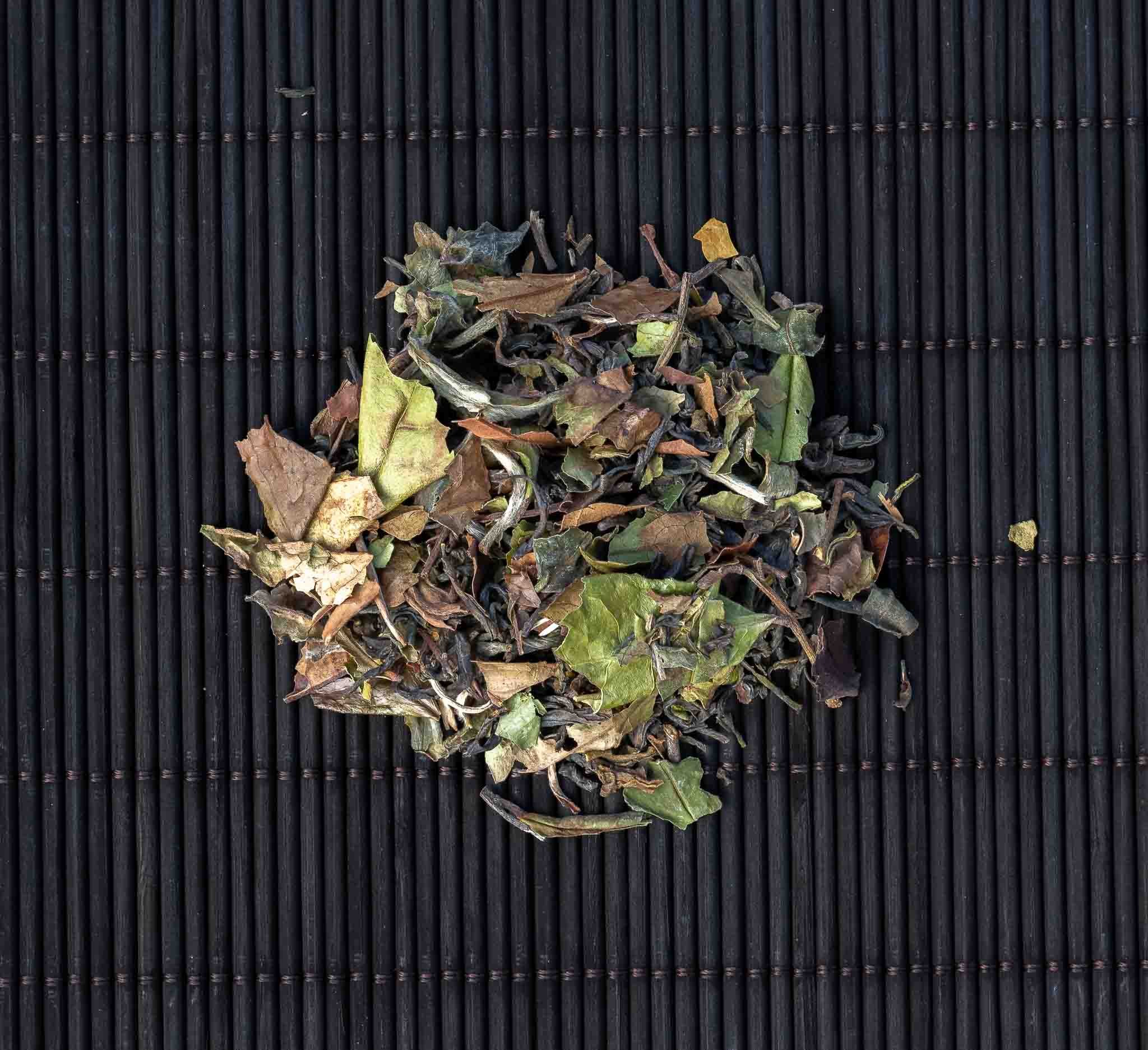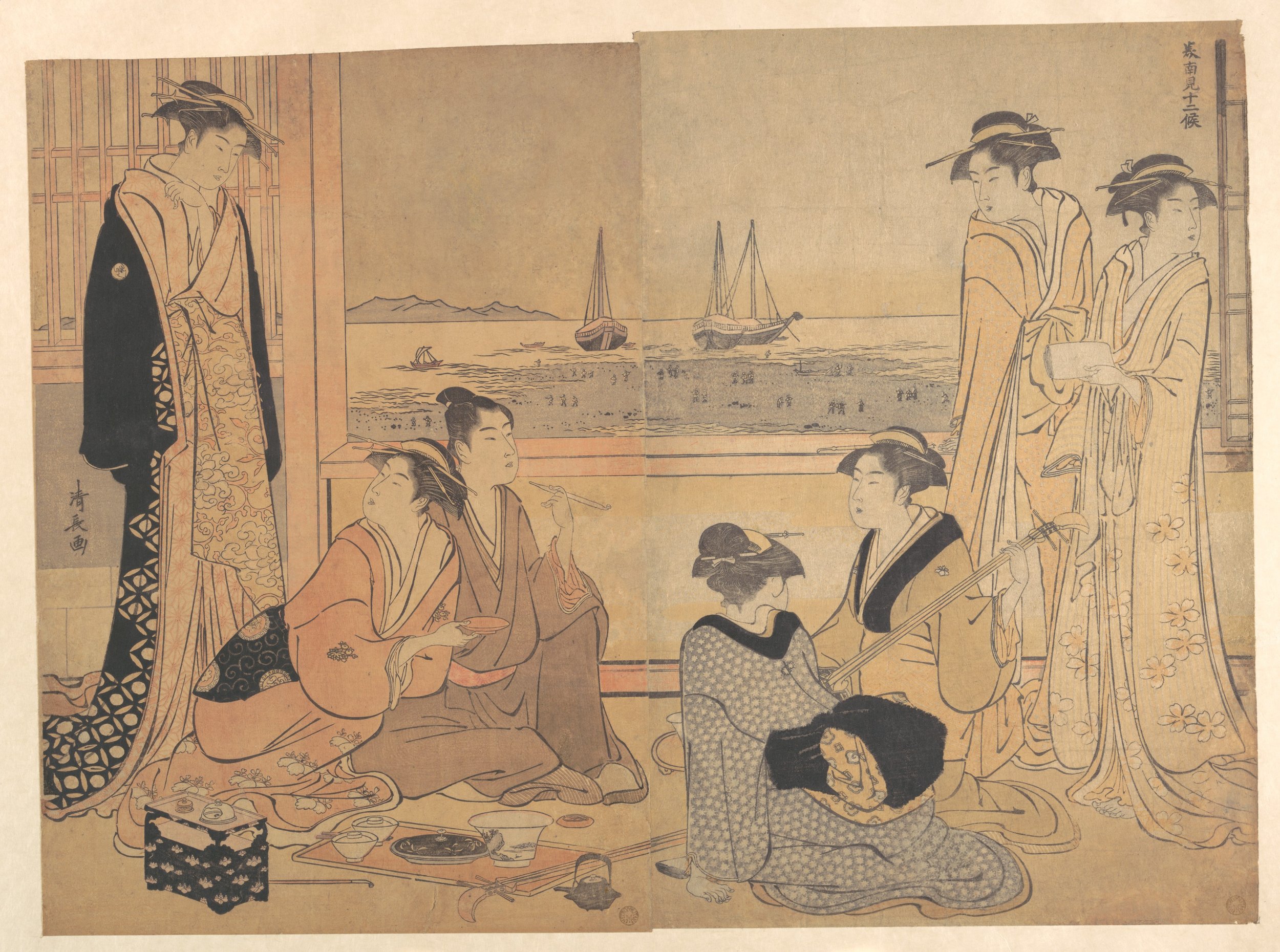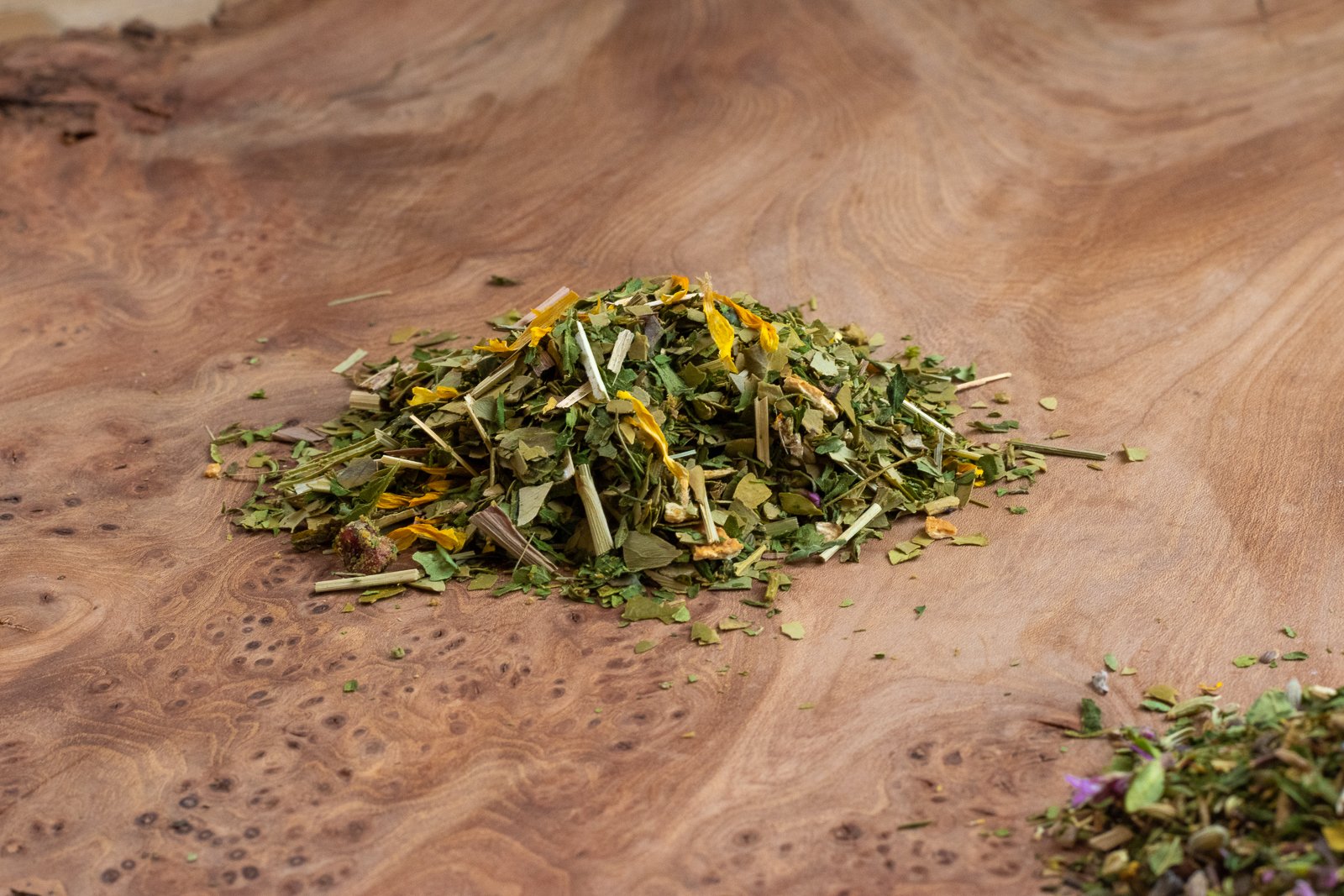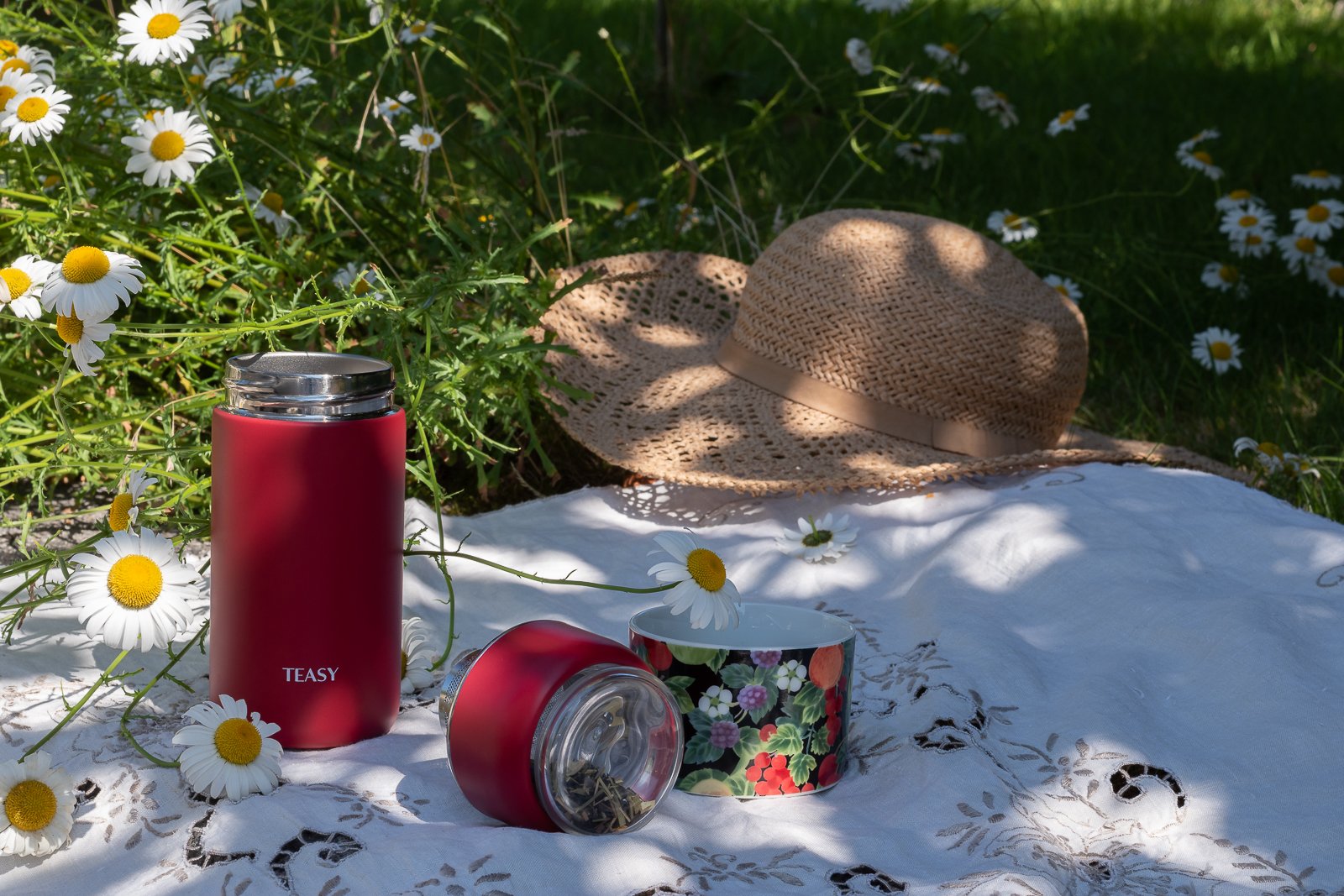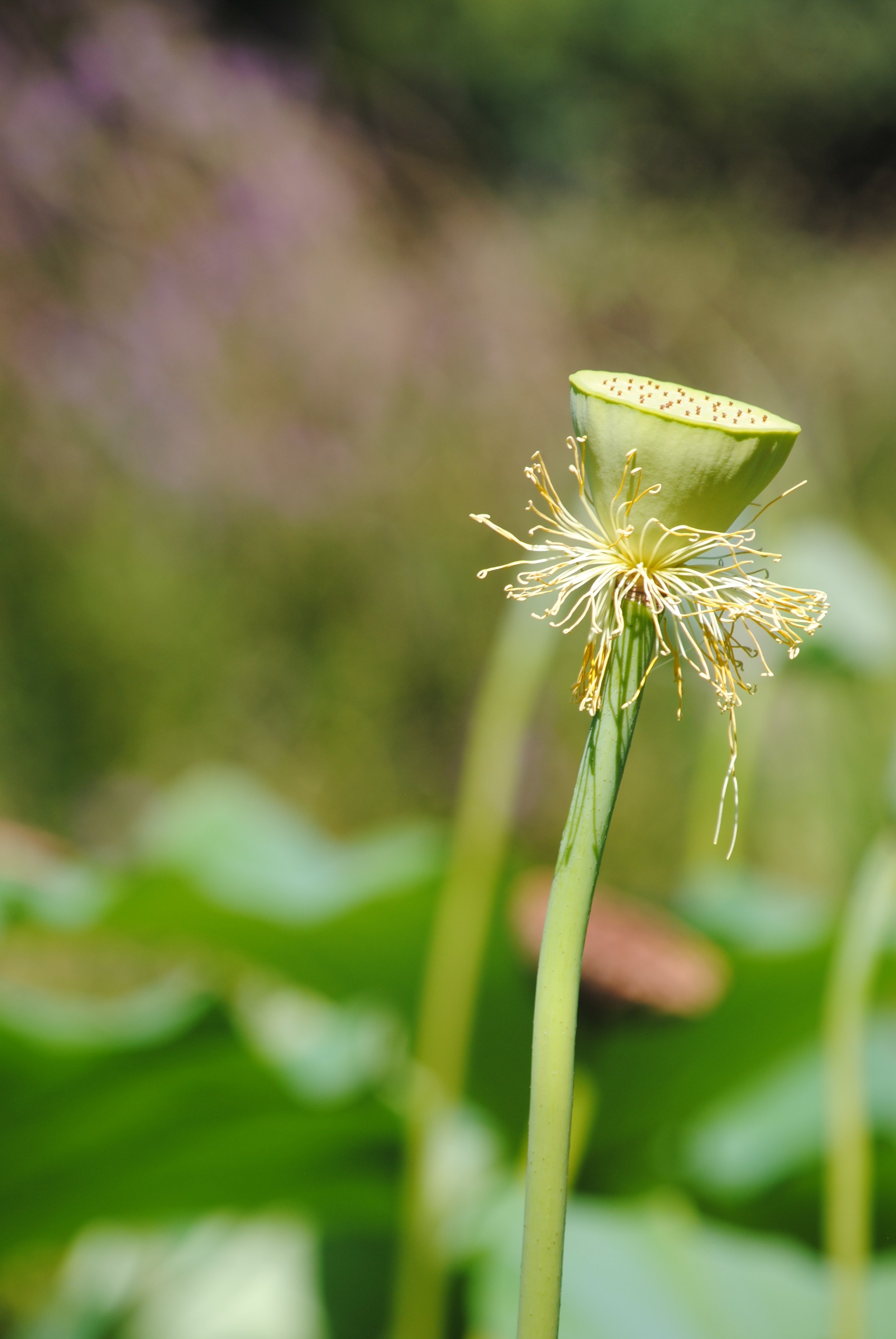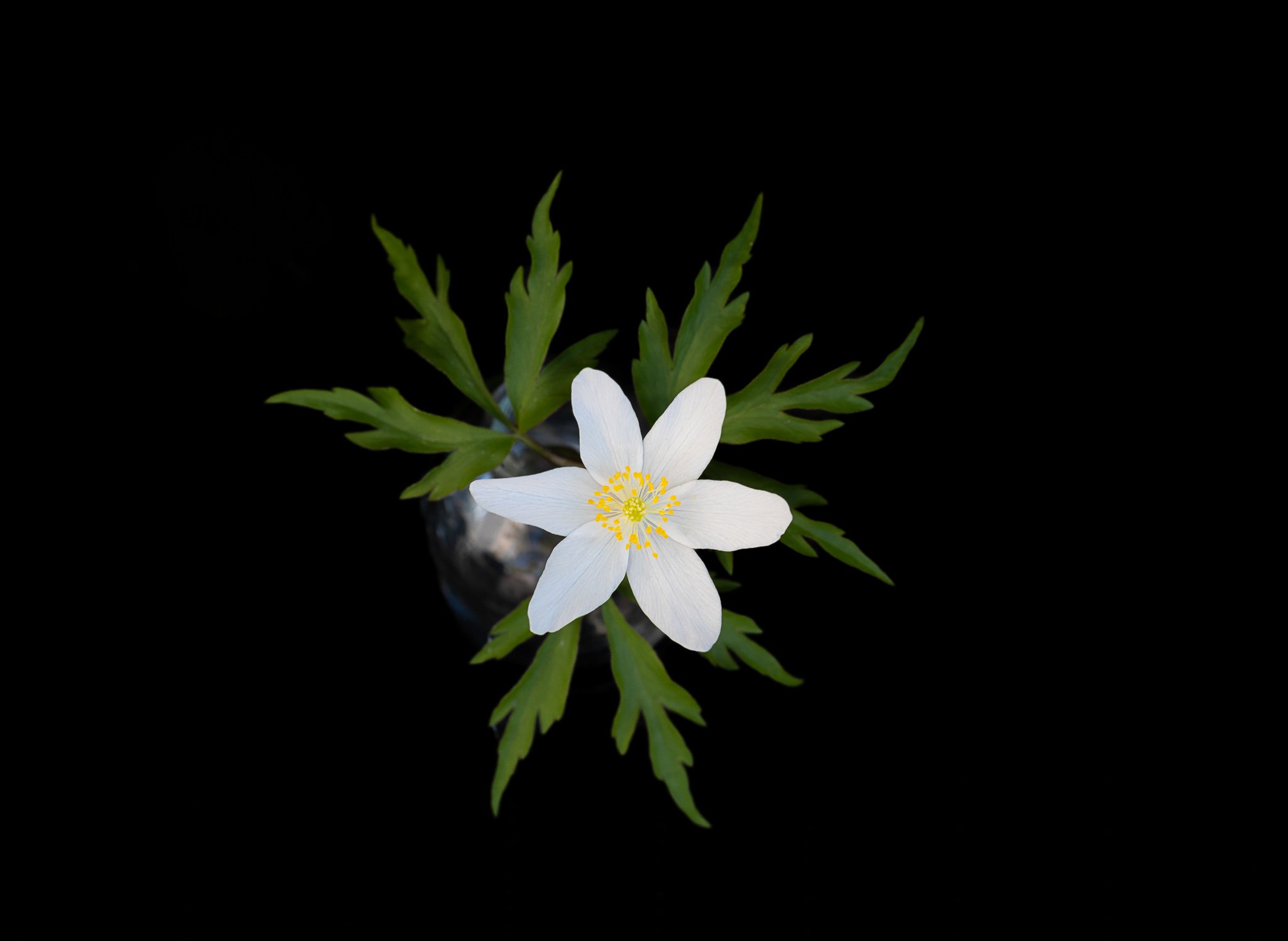
The Art of Tea drinking
Enjoy!
Green Tea. Photo by Anna King
Riddled with politics, colonialism and exploitation, the history of tea is without doubt controversial.
Tea is one of the most popular beverages in the world. For some cultures tea-drinking and it’s preparation is a reflection of people and place; for others it is a symbol of unity, peace, friendship and hospitality.
This blog considers the art of tea drinking as an opportunity for contemplation, reflection, and aesthetic exploration.
After a brief glimpse into the rich history of traditional tea ceremonies, Anna guides you through a contemporary mindful tea drinking practice, followed by a selection of tea blends.
Tea Plant (Camellia Sinensis): Flowering Stem. Unknown Artist. Photo credit: Wellcome Collection
Tea culture has it’s origin in China. The Gongfu tea ceremony, once a strictly religious practice, is now one of the most famous tea ceremonies in the world.
Japanese tea ceremony, or chanoyu, gained prominence in Japan during the 12th century. Originally introduced to Japan by Buddhist monks as a ritualistic practice to aid meditation, the tea ceremony gradually transformed into a highly stylised and revered art form, known for its emphasis upon mindfulness and harmonious aesthetics.
In the 16th century, tea masters, such as Sen no Rikyū, played a pivotal role in popularising the Japanese Tea Ceremony. Rikyū's teachings emphasised the principles of wabi-sabi, blending simplicity with an appreciation for the beauty of imperfection and the transience of life. These values deeply influenced the aesthetics and philosophical underpinnings of chanoyu, shaping it into a ritual that celebrates the imperfect and fleeting nature of existence.
A Party of Merrymakers in a Tea-house at Shinagawa, by Torii Kiyonaga, 1783. Credit: Rogers Fund, 1914. Met Museum
Throughout history, the tea ceremony has been intricately linked with various forms of artistic expression. In traditional Japanese art, depictions of tea ceremonies often adorned screens, scrolls, and ceramics.
Contemporary artists reinterpret the tea ceremony through a range of mediums, including immersive installations that invite audience participation, to multimedia works. For instance, contemporary Japanese artist Hiroshi Sugimoto has created installations that evoke the meditative atmosphere of the tea ceremony, drawing upon its symbolism and ritualistic elements.
While the earliest documented references to tea originated in ancient China, tea rituals and traditions surrounding tea consumption have developed throughout the world.
Photo: Alamy
For example, in Morocco there is a strong tradition of tea ceremony, known as ‘atai’, which involves a highly ritualised preparation and serving of mint tea in vibrant tea glasses.
Similarly, in Britain, the tradition of afternoon tea carries its own set of rituals and etiquette, often depicted in works of art, such as ‘5 O’Clock’, by John Bagnold Burgess (1852), and ‘Afternoon Tea’, by George Goodwin Kilburne (1897).
Edward Bawden's delightful lino-print, 'Tea for Two (Cats),' offers a charming glimpse into the pervasive presence of tea-drinking in British daily life. In the 1930s, Bawden further showcased his affinity for tea by illustrating a collection of tea blends for the renowned Twinings tea company.
The Art of Tea Drinking
Traditionally, tea refers to plant Camellia sinensis. The plant (or shrub) produces a diverse array of teas, including white, yellow, black, and green tea, as well as oolong and pu-erh varieties.
A combination of green tea and herbs, by Anna King
Although frequently labeled as ‘tea,’ herbal infusions do not originate from the Camellia sinensis plant, and are therefore not regarded as ‘true’ tea.
Nevertheless, botanical teas have gained immense popularity as alternative options, and are often mixed with true tea (Camellia sinensis).
There is a long tradition of using quiet, reflective tea practices as part of a deeply relaxing meditation or retreat experience, and world-wide there are countless ceremonies and blends used during meals and celebrations.
Indeed, tea pairings (both true tea and botanical) are now a popular alternative to wine in fine dining establishments.
“Botanical teas are a poetic expression of nature’s magnificence;
An opportunity to integrate a little bit of restorative magic into your everyday life;
And, an invitation to find balance amidst life’s challenges and chaos.”
— Anna
The At of Tea, by Anna King
One of my favourite practices is a mindful botanical tea experience:
The Art of Tea, by Anna King
Tea is so much more than a source of hydration and nutrients. Drinking tea is a sensory experience that can help us connect to our intuition and the ‘deep well of potential’ that exists within. Taking time to regularly contemplate and reflect upon the properties and quality of the plants, herbs and fruit in your tea blends can have a really balancing effect on your emotions and nervous system. It is a wonderful way of integrating mindful meditation into your daily life, particularly for people who find sitting in traditional meditation difficult.
A Mindful Tea Experience
After brewing your favourite tea, sit comfortably; take a few conscious breaths and slightly extend your exhalation - so that it’s a little longer than your inhalation.
Hold your cup of tea close to your chest and pause.
Now consider the temperature of the tea. Be aware of your sense of touch through the warmth of the tea cup.
Now slowly bring the cup to your nose and pause here while smelling the tea’s aroma. See what kind of sensations this elicits in your body? Maybe the scent brings back memories, or maybe you experience a deep sense of relief and relaxation - let every sensation unfold naturally, without force. Slowly sip…
Now it’s time to turn your attention inward.
Calendula Tea, by Anna King
Connect to the water element of your tea and then bring your attention to how you feel - with no expectation, just awareness - you’re not trying to change how you feel, so don’t worry if you are tired, stressed or upset. The art of tea drinking is about creating some ‘sacred’ space that will enable you to give attention to a practice that enables your nervous system to rest, relax and rejuvenate. We are not FORCING change; it’s an invitation. Spend a few moments being present with yourself and your feelings.
Now that you have honoured your feelings, bring your attention back to the tea, its aroma, warmth, colours and the element of water.
If you find your mind or emotions running away with you - don’t worry, just keep bringing your attention back to your tea-experience. Let the warmth of the tea and properties of the herbs soothe your frayed emotions. Close your eyes and enjoy the experience.
When you have finished take a few moments to honour the plants in your infusion. Thank the plants in your tea, the growers who have harvested them and then close the practice by some simple act, such as taking your cup to the sink, or composting the herbs.
Wild Irish Rose Blossom Tea, by Anna King
The Art of Tea Drinking, By Anna King
Below are my current favourite blends.
Elements, by Alveus
Cultivated with love, picked by hand and packaged with care, these organic tea blends are sourced from some of the worlds finest remote tea gardens, thus guaranteeing high quality ingredients that are certified and ethically produced.
Jasmin Imperial
Four top Chinese teas are united here into a blend of the finest green tea and delicate white tea.
Ingredients: Green Tea China Jasmin, Pai Mu Tan, China Jasmin Silverneedle, China Jasmin Dragon Pearls. 100% Organic Hand-Blended Premium Tea Blend.
Lady’s Star Deluxe
The spicy power of black teas in this blend are rounded off by a fruity note of orange and citrus and a light floral touch. Certified Organic.
Ingredients: Black Tea Assam, South India, Lemongrass, Black Tea Assam OP, Black Tea Golden Yunnan OP, Lemon Peels, Verbena Whole, Rose Petals, Cornflower blue. Natural Flavouring: Orange Peels. Certified Organic
Amour Provence. Rosemary-Thyme-Lemon Taste.
A touch of rosemary, thyme and lemon refines the floral notes in this tea, and sweet cinnamon creates a mellow aftertaste.
Ingredients: Lemongrass, Cinnamon Sticks, Verbena, Olive Leaves, Rosemary, Thyme, Lavender, Lime Blossoms. Natural Flavouring (Lemon, Grapefruit). Certified Organic.
As with all herbal teas - please check with your health-care practitioner before consumption if you are on medication, pregnant have allergies or any other health condition.
The Art of Tea Drinking - Photo by Anna King
My Lotus Blossom Story
Enjoy
Lotus Blossom. Photo by Anna King at Le Jardin des Plantes.
For centuries, the lotus blossom has been a profound symbol of purity, enlightenment and rebirth across many different cultures, particularly in Eastern traditions, such as Hinduism, Buddhism and ancient Egyptian culture.
It’s serene beauty and spiritual significance has continuously inspired artists throughout history, including, Georgia O’Keeffe, who used bold strokes and vibrant colours to capture its essence on canvas.
A Contemplative Exploration of the Lotus Flower
Taking time to meditate upon the wisdom associated with the lotus flower is a mindful practice that helps us let go of the past and embrace that which is unfolding in the ever-present moment.
Keeping this in mind, I invite you to explore my lotus blossom blog, where you will discover insights into the spiritual significance of the lotus, followed by a heart-based Mudra meditation at the bottom of the page.
Out of the darkness of muddy waters beauty is born.
During my last visit to Montpellier in France, I stumbled across an enormous pond of flowering and seeding lotus blossoms at Le Jardin des Plantes. It was a moment of unexpected surreal beauty and an experience that will stay with me for the rest of my life. It really was awe inspiring - and deeply healing.
We discovered the entrance to the garden while I was admiring the architecture of a derelict building near to where we were staying. So, without hesitation, we entered and started rambling along an old stoney pathway that meandered into a bamboo wood. As I chased a little lizard around a corner in an attempt to take a photo of his cheeky smile - my breath was literally taken away.
A truly awe inspiring moment of magic unfolded.
Lotus Blossoms. Photo by Anna King at Le Jardin des Plantes, which was founded in 1593.
With fossil records dating back 130 million years, the sacred lotus flower is one of the oldest plants on earth. It used to proliferate the Northern and Southern hemispheres, but due to climate change its native habitat has declined. Revered in the art, literature and mythology, it is well known for being sacred to Buddhists and Hindu religions, but there is ethnobotanical evidence of other cultures using the lotus for medicinal and ceremonial purposes as well, including Native Americans who used it as a herb in sun ceremonies.
What is particularly fascinating about the lotus is the journey it undertakes to flower.
At dawn the lotus emerges from the murky depth of a pond and pushes its way through the darkness toward the light to flower, untainted by mud or water.
LOTUS BLOSSOMS at Le Jardin des Plantes. Photo by Anna King
The journey of the lotus bud emerging from darkness to light is often associated with the idea of death and rebirth. The struggle of the lotus flower to be (re)united with the sun teaches us that it’s possible to unfold from the dark-night of the soul into awareness; to expand into a state of higher consciousness and eventually sit in the radiance of dawn’s healing light. The cycle of the lotus blossom is a journey of transcendence and renewal. It reminds us that nothing is permanent, that ‘this too will pass,’ and that the process of life, decay and rebirth is a natural part of nature’s magnificence.
Lotus Blossoms. Photo by Anna King at Le Jardin des Plantes, which was founded in 1593.
Lotus wisdom teaches us that there is also an element of intuitive timing to our awakening. Being patient and present with our inner darkness, rather than forcing change too abruptly, is the energetic key that unlocks life-force and vitality. When we are in alignment with the sun and moon, day and night, and at peace with our pain and anguish, change will emerge naturally. We don’t need to rush our healing process, for every step of the way has purpose, meaning and every life-event has a ‘sign’ to guide us along the path of golden light. This is the message of the lotus flower.
Self-Knowledge.
Say not, I have found the truth, but rather, I have found a truth.
Say not, I have found the path of the soul.
Say rather, I have met the soul walking upon my path.
For the soul walks upon all paths.
The soul walks not upon a line, neither does it grow like a reed.
The soul unfolds itself, like a lotus of countless petals.
— Kahlil Gibran
Regarded as a bridge between our ‘inner and outer worlds,’ the lotus blossom’s bud is often compared to a folded heart or soul that has the ability to blossom, or awaken to divine truth. It’s possible to work with this imagery in your yoga or meditation practice.
Lotus Blossom Insights:
You don’t need to force change. Take time in mindful meditation to be present with your pain, and let change unfold naturally in your life. Dawn only rises once a day.
Connect regularly with your inner beauty and nurture self-compassion. Yoga and mindful meditation can help.
Darkness is as important as light - indeed, light emerges out of the darkness - once we realise this we release ourselves from the all-consuming guilt that is often associated with feelings of ‘failure’, or uncomfortable emotions and stressful life events. Once we release guilt (which is often connected to judgement) we can then start the process of healing / change from a place of resilience, rather than desperation.
Due to its magnificence and beauty, the lotus is also considered by many cultures as the embodiment of purity and perfection. It is symbolic of our ‘true nature’ - that which is untouched by our lived-experience.
Lotus Mudra - A heart centred meditation
Finger or hand gestures in yoga are called Mudras. While mostly associated with India, Japan and China, Mudra type gestures have been incorporated into many different culture’s all over the world, for instance in dance traditions, such as Flamenco.
In yoga, Mudras have a number of meanings including gesture, seal, mark and ‘to draw bliss’. They act on the body’s subtle energy systems (meridians, chakras, aura) to create balance and support the body’s natural healing processes:
Subtle physical movements and symbolic Mudra gestures are used to affect the flow of Prana (life-force) in the body.
They cultivate a calm state of mind and focus.
They can affect mood, attitude, perception and awareness.
The therapeutic use of the Lotus Mudra is thought to open the heart centre, generating compassion for ourselves and others.
How to do the Lotus Mudra
Sit in an easy pose, but with the back straight (connecting with sit bones) and - if on a chair, have both feet on the ground.
Settle into the natural ebb and flow of your breath.
Bring the base of the palms together at the heart centre (chest) in prayer.
Touch thumbs and little fingers together
Spread the rest of the fingers out like the lotus flower opening, while keeping the base of the hands touching.
Close your eyes
Take 12 deep long full in-breaths and out-breaths.
Take time witnessing your heart energy.
Release and sit for a few moments in meditation


